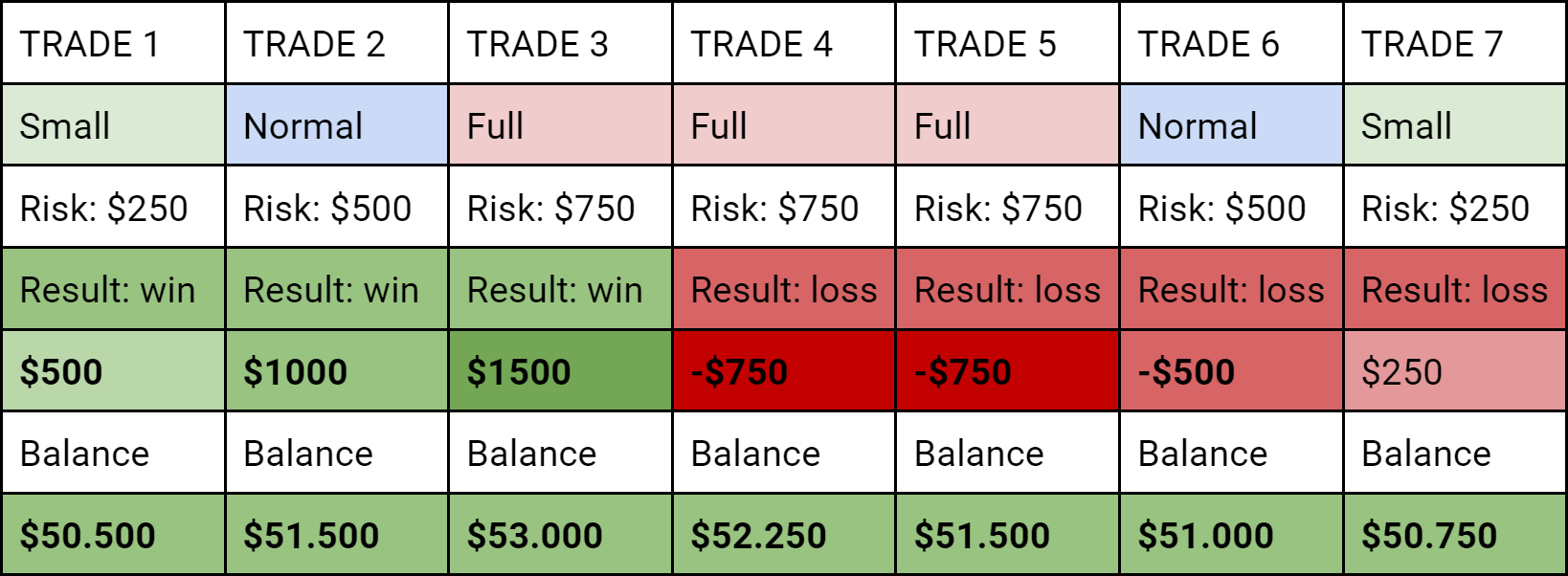Mastering Market Dynamics: The Benefits of Progressive Exposure
By Kristoff De Turck - reviewed by Aldwin Keppens
Last update: Apr 19, 2024
Anyone who actively trades undoubtedly knows that the degree to which your portfolio is exposed to risk plays a decisive role in the overall return.
Investors using progressive exposure can maximize that return while limiting their risk.
Why? Because this proactive strategy ensures that larger positions are taken when markets are favorable allowing them to take full advantage of positive market momentum.
The true strength only becomes apparent when financial markets are negative. In that case, this technique ensures a seamless initial shift to a more defensive stance where the size of new positions is significantly reduced, thus greatly reducing risk exposure.
In case a true bear market develops, this will even lead to a situation where the investor holds 100% cash. In this way, the technique ensures maximum coverage against the full impact of a market downturn.
Key Points
-
Progressive exposure involves scaling in and out of positions based on current market conditions.
-
In favorable market conditions, exposure is increased by taking larger positions.
-
In negative market conditions, smaller positions are taken, lowering exposure.
-
It is a dynamic risk management technique that allows you to take full advantage when market conditions are optimal.
Underlying Dynamics
Progressive exposure is based on three simple basic principles:
-
Maximum risk/largest positions in favorable market conditions and positive sentiment.
-
Less risk/smaller positions during unclear market conditions and rather neutral sentiment.
-
No risk/no positions during unfavorable market conditions and negative sentiment.
In essence, it comes down to starting cautiously with some test positions. The sole purpose of these is to probe the market while keeping the risk small.
Only if the test positions evolve positively can larger positions be scaled up to take advantage of the momentum.
Why Using Progressive Exposure?
Identifying new bull markets in a timely manner and actually capitalizing on them remains a difficult task. It takes patience and also a lot of experience to know when the time is right to take new positions. Even the most experienced investors will (continue to) make mistakes in this regard.
This is logical, when after a bearmarket suddenly a strong counter-movement occurs, nobody knows whether this rise also means the beginning of a new uptrend.
By keeping your positions very small in the beginning, the effect on your total account will only be limited if the trend does not continue and you are stopped out several times in a row. However, once you notice that your first positions are doing well, you can use those initial profits to fund your next (somewhat larger) positions. If the trend actually continues, you can gradually increase your exposure and take full advantage of the bullish momentum.
This way of trading offers the advantage that your own trades act as a kind of momentum and trend indicator. The more successful trades you open, the more likely it is that your assumption about future market direction was probably the right one.
Financing Risk
Progressive exposure is not a new concept. Mark Minervini, two-time US Investing Champion, is a big fan of this technique. He explains the concept in detail in his book "Think and Trade Like a Champion" specifically in section 5 "Compound Money, Not Mistakes".
Below is an example of how progressive exposure can be applied. As an example, let's assume an available trading capital of $50,000 where we use the following rules for opening new positions (all calculated on total available equity):
Small exposure
- Max risk% per trade | 0.50% | $250
- Max exposure per trade | 10% | $5000
Normal exposure
- Max risk% per trade | 1% | $500
- Max exposure per trade | 17,5% | $8750
Full exposure
- Max risk% per trade | 1.5% | $750
- Max exposure per trade | 25% | $12500
We further assume a 2/1 risk:reward ratio for this theoretical example. So that implies that a winner is twice the size of a loser.

Trade 1
- A first small test position is opened (0.25% risksize) that was closed with a profit.
Trade 2
- The profit from the first trade is used to finance the risk of the second normal position (1% risksize). This position is also profitable.
Trade 3
- Again a winner but after the first two successful trades a full position was opened with a risk% of 1.5%. After these first 3 trades the account shows a profit of $3000.
Trade 4 and 5
- It seems we have recognized the trend well and in time. Time to crank up the throttle. The next two trades are full positions, fully funded by the previously accumulated profits.
Trade 6
- Since the two previous trades were losers, the risk is reduced, a normal position is opened. But this one also closes negative.
Trade 7
- Since the previous trade closed negative only a small position is opened.
Since the last trade also ends in a loss (four loss trades in a row) it seems that the new uptrend has ended prematurely. We are switching to 100% cash until the market offers more clarity.
Although the last four trades ended with a loss, the final balance is still positive (+$750).
For the record, this is a purely theoretical approach. In real market conditions, different positions will not close one after the other nicely. There will also be trades that break even or close with only a small loss or small profit. The example merely serves to show that the initial profits can be used to then fund the risk for the next larger positions.
Summarized
Using progressive exposure allows you to manage risk in the most optimal way. If the setups do not produce the desired results you cut exposure, making your risk minimal in market conditions that are apparently not favorable to your strategy. Keeping the same exposure under those conditions is pernicious to your results.
But where progressive exposure differs from other risk management techniques is in the fact that it is not merely a defensive tool. This technique also allows you to move quickly and trade more aggressively when the initial trades do work out. As a result, you will precisely build the largest positions in optimal market conditions. The small profits from the first successful defensive positions are then used to fund larger positions.
Curious about other articles on risk management? Start here!




